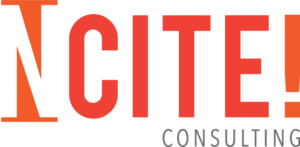Managing a nonprofit requires a committed staff, dedicated leadership, a clear mission, passion, and the right tools readily available. It may be tempting to continue running your organization as you’ve always done, to stick to the tried and true way of doing things. However, in this very tech-forward world, you could be missing out on opportunities to improve your community impact.
That’s why I’ve come up with a list of nonprofit software I think every organization should have in their nonprofit toolbox. These are types of software I’ve found useful working in this sector, and I think you will, too.
Here we go!
-
A Password Manager
Keeping track of every account and login is something we’ve all struggled with, especially if you’re managing a large staff. As people come and go, usernames and passwords can get lost in the transition which can create a potential security threat. Thankfully, password managers now solve this problem. Password Managers act like bank vaults for your organization’s logins. Usually, you’ll need one password (the master password) to access this vault and your other logins. Instead of remembering the information for every account, you’d only need to know your master password. If you ever need to change account information, you’d have to update the login once through the password manager and never have to worry about it again.
-
File Storage & File Sharing Services
Because we live in such a globalized world it’s becoming more common to have staff working remotely or in hybrid environments. In these situations, the ability of coworkers to work on a document simultaneously is important. It’s not enough to continue updating and sending the latest version of a document to your team. At some point, you’ll lose track of which version you’re on, or someone on the email thread will forget to hit “Reply All” with their edits. Instead, services like Google Drive that allow multiple people to work on one document, save your team from losing track of edits. You’ll also be able to be more collaborative with your work and include coworkers outside of the physical office. Lastly, while online storage services don’t have to replace your physical filing completely, it’s good practice to have a digital copy of important documents.
-
Customer Relationship Management Tool (CRMs)
There are plenty of CRM options out there, and deciding which one to use should be a conversation you have with your staff, especially your development team. CRMs make managing relationships easier because they house and organize donors’ data, and then allow you to pull from that data to answer questions about your donor base. For example, if your board wants to know how many recurring donors you have this quarter compared to last quarter, you can input those criteria into your CRM, and the database will pull all relevant information. Also, as your organization grows, you’ll rely on your CRM more than the mental donor list you have in your head. Trust me. You may think you know most of your donors by face or name alone until you call the wrong donor to thank them for their “substantial donation.” You’ll wish you had a CRM then. You can learn more about CRMs by reading my last blog post “Three Ways to Get the Most Out of Your Customer Relationship Management Tool.”
-
Instant Messaging Program
When you’re old school like me, this one is hard to get your head around. I still remember when organizations started working with email and how efficient it was. But that’s the point of technology, things progress and yes, while email is still useful, it’s better when matched with an instant messaging program. Why? Because these programs take some of the work off your email. We all know what it’s like to start our week with a full inbox where a portion of the messages are one sentence or new replies to an email thread that is weeks long. It feels like too much, and some of it feels unnecessary. Instant Messaging Programs take those unnecessary emails and turn them into quick chats that you can easily reply to. Instead of starting your day with a full inbox, your inbox will only contain messages that are “email-worthy.” Everything else is in the messaging program, and I promise you that seeing a decluttered inbox is a wonderful feeling.
If you’re interested in using your nonprofit software to better manage your organization, schedule a free 30-minute consultation with me to determine how I can help you achieve your goals.


